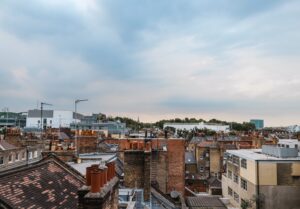Air pollution is reducing far more slowly in outer London than central London
Air pollution is declining far more slowly in outer London than in central London, according to new data published today by City Hall.
The data reveals that from 2016 to 2019, nitrogen oxide (NOx) emissions reduced at just half the rate in outer London as they did in both central and inner London.
The percentage reduction in particulate matter (PM.10) was also 10 times greater in inner and central than in outer London and the percentage reduction of PM2.5 was 5 times greater in central London than in outer.
The Mayor of London Sadiq Khan has said that the government must invest in infrastructure in outer London, this includes ensuring that planned public transport improvements receive the funding needed.
Sadiq Khan also highlighted that leveling-down London is not the way to level up other parts of the country as the capital is fundamental to driving a green recovery and supporting jobs in London.
A recent report by Imperial College London found that the greatest number of deaths attributable to air pollution were in outer London boroughs, this is reportedly due to the higher proportion of elderly people in these areas. The boroughs with the highest number of air pollution-related deaths in 2019 were Bromley, Barnet, Croydon, and Havering.

The Mayor of London Sadiq Khan said: ‘I pledged to be the greenest Mayor London has ever had and today’s data demonstrates the transformative and rapid impact of my air quality policies in central and inner London.
‘However, air pollution still remains a major public health challenge and I’m not willing to stand by and wait when there’s more we can do in outer London that could make a big difference. We simply don’t have time to waste, there is still far too much toxic air pollution permanently damaging the lungs of young Londoners and affecting older people who are more vulnerable to the impacts of air pollution.
‘This is also a matter of social justice – with air pollution hitting the poorest communities the hardest. Londoners on lower incomes are more likely to live in areas of the city most badly affected by air pollution and are least likely to own a car. Nearly half of Londoners don’t own a car, but they are disproportionally feeling the damaging consequences polluting vehicles are causing.
‘Too often we have seen measures to tackle air pollution and the climate emergency delayed because it’s viewed as being too hard or politically inconvenient, but I’m not willing to put off action we have the ability to take here in London. I’m determined that we continue to be doers, not delayers to protect Londoners’ health right now, and for the sake of future generations to come.’

















The end of air cons, plantation of trees and have more green spaces, reducing consumism. Its something that can be done. More information ( different ways of information so people across society can understand and feel empowered about difference they can make about the environment. Corporations and companies to be fined and penalised for any pollution, waste harmful actions or the lack of it towards recycling and environment. Provision of bins and regular collection.
I see the SIA says: Almost half of PM2.5 emissions from domestic burning come from outdoor sources, according to research commissioned by the @StoveIndustryhttps://airqualitynews.com/2022/02/01/half-of-pm2-5-from-domestic-burning-comes-from-outdoor-sources-says-stove-industry/ …
I see the SIA comisisoned their own study. Better to go by the government reports? Even so, to me, wood smoke from my neighbour’s chimney and BBQ both count as being outdoor sources. Would be helpful to know the composition of the PM2.5 before saying where from. Defra says from industry & traffic but that most is from domestic burning and as coal fires have diminished, it has to be from wood smoke, doens’t it? Wood stoves are very common now in areas on edge of London and our other cities.
So in other words more charges on the way for drivers! You sir are a fraud. Unbelievable.
So in other words more charges on the way for drivers! You sir are a fraud.
It’s not all from cars though is it? Areas around edge of London are more likely to be residential so domestic combustion could be important here. And outer London is closer to rural areas with some pollution coming from farms perhaps. It’s absolutely right to press on with this.